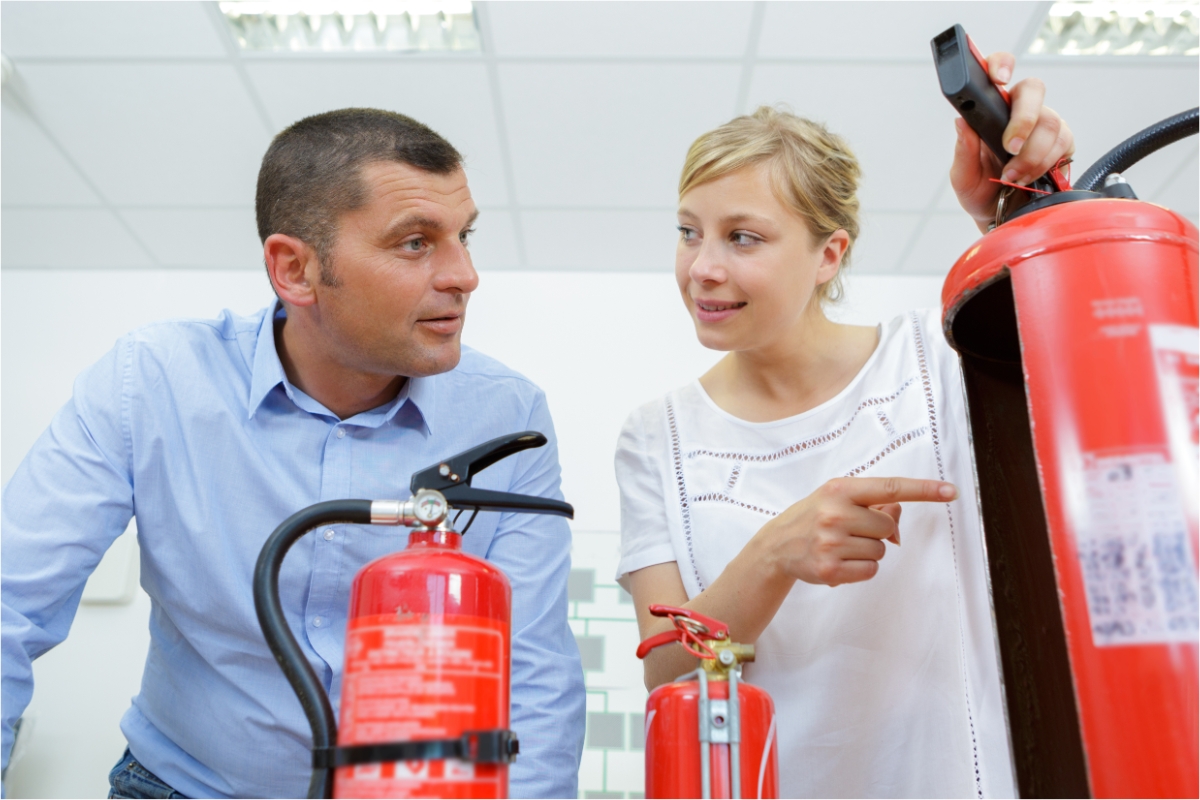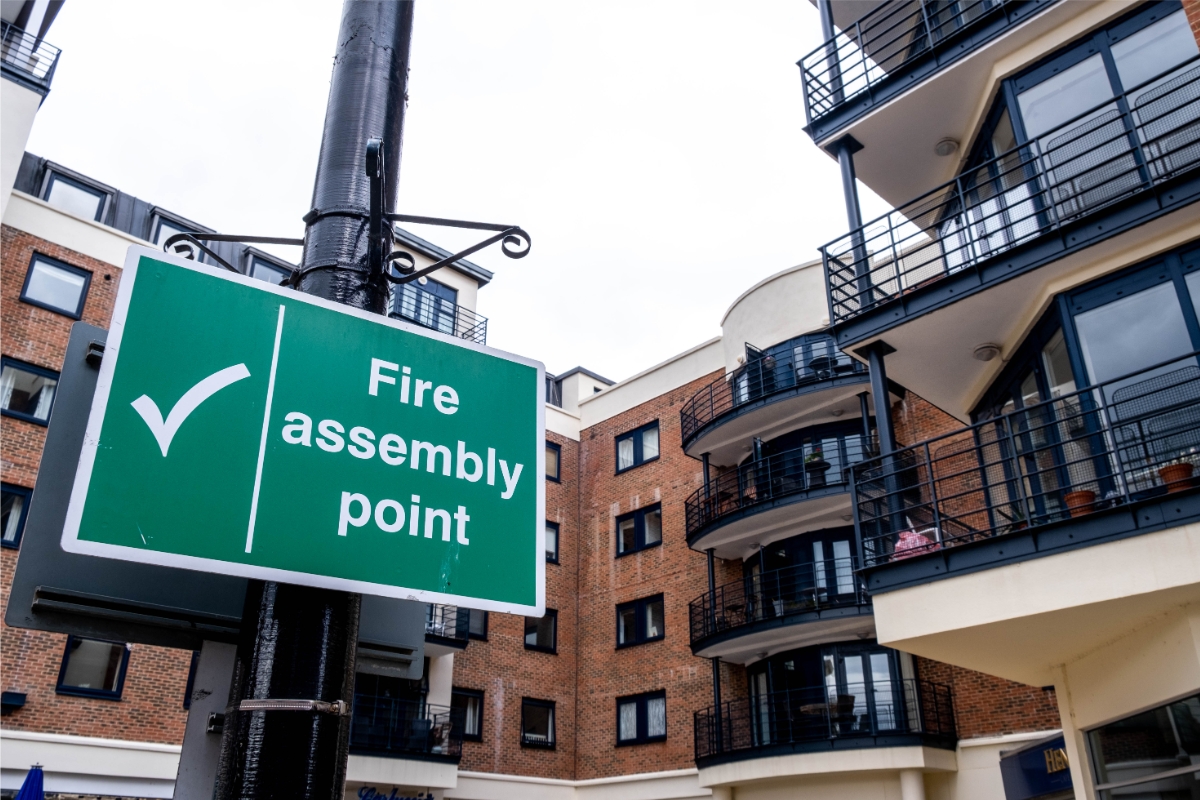
Does Your Business Have a Fire Safety Plan?
Fire safety is not just a necessary aspect, but a critical one, of managing any business. Regardless of the size or type of business, the potential risks of not ensuring the safety of personnel and property from fire hazards are alarming. It’s not just about protecting lives and assets but also about meeting a legal requirement. A robust fire safety plan is your best defence against these risks.
This article explains a fire safety plan, its importance in the workplace and how businesses can implement an effective strategy to safeguard against fire-related incidents.

What is a Fire Safety Plan?
A fire safety plan is a detailed document created by a business to outline the procedures for preventing fires and limiting damage should a fire occur. This plan is tailored to the business’s specific building needs and resources. It includes:
- Emergency plans detailing property layout
- Details of potential fire hazard hot spots
- Details of the type of fire protection equipment available – e.g.
- Fire extinguishers
- Smoke alarms
- Sprinklers
- Emergency Chair
- First-aid Kit
- A chart for marking maintenance schedules for fire protection equipment
The plan must be reviewed and updated regularly to adapt to any changes in the business environment, such as new equipment, processes or building layouts.
What is the Importance of General Fire Safety in the Workplace?
Employees Safety
Regular engagement in fire safety practices equips employees with the necessary skills and knowledge to handle potential emergencies and instils confidence and readiness. This reinforces a collective responsibility to maintain a safe environment for all.
Visitors Safety
A general fire safety plan is just as crucial for visitors unfamiliar with the property layout. Ensuring that fire safety protocols are visibly displayed and communicated can significantly reduce the risk of injury or harm to visitors during a fire. This includes:
- Maintaining accessible and well-marked exit routes for all abilities
- Ensuring fire doors are clear and accessible for all
- Keeping staircases clean and hazard-free
- Having functioning fire extinguishers
- Conducting regular staff drills
By prioritising fire safety, the business demonstrates its commitment to the well-being of all individuals within the property.
Property Protection
General fire safety in the workplace is essential for protecting the lives of employees and visitors and the business’s physical assets and infrastructure. Adequate fire safety measures can help prevent fires and mitigate damage if a fire does occur. These include:
- Installing smoke detectors
- Using appropriate fire doors
- Maintaining fire suppression systems
- Conducting regular inspections
By investing in robust fire safety practices, businesses safeguard their operations against disruptive fire incidents that can affect their long-term sustainability and success.
Preparation
Preparation is a critical component of general fire safety in the workplace. It involves equipping the workspace with the necessary tools and knowledge to respond effectively to potential fire emergencies.
Such preparedness helps quickly address a fire incident to minimise damage and injuries and complies with health and safety regulations. It enhances the overall safety culture within the organisation and ensures all employees can handle fire emergencies calmly and smoothly.

Business Fire Safety Plan
The first step in creating a fire safety plan is conducting a thorough risk assessment. This involves identifying potential fire hazards within the property, such as:
- Flammable materials
- Electrical equipment
- Heating sources
Further, the assessment should identify people at risk and evaluate, remove or reduce risks. It should consider the building’s design and layout, mainly looking for areas that could contribute to the rapid-fire spread or hinder evacuation efforts.
Raising the Alarm
When developing a business fire safety plan, one critical element is a robust alarm system to alert occupants to a fire and ensure prompt evacuation. Installing alarms that comply with local fire safety standards and positioning them strategically throughout the property to be audible in all areas is essential. Regular maintenance and testing of the alarm system are imperative to guarantee functionality when needed.
Additionally, accommodating individuals with mobility, sight or hearing impairments is crucial.
Mobility Disability:
- Position alarm activation stations at lower heights within easy reach of individuals in wheelchairs or those who have difficulty reaching standard alarm stations
- Have reachable open buttons at fire doors for better accessibility
- Have evacuation chairs ready near evacuation routes and stairwells
Visual Impairments:
- Implement braille signage
- Alert with audible notifications
- Installation of tactile guidance strips
Hearing Impairment:
- Install alert systems that flash
- Vibrating alert systems
- Sign Language on visual videos
- Audio transmission to hearing aids
This comprehensive approach minimises risk and promotes an inclusive, safe environment for all employees.

Evacuation
The Evacuation plan should outline clear escape routes and exits, which should be marked and kept clear at all times. The evacuation plan must also include procedures for assisting physically disabled, hearing and visually impaired employees and visitors and designating assembly points outside the building.
Designated employees should be thoroughly briefed ahead of time to manage specific sections of the building efficiently. It is essential to assign one individual responsible for overseeing the distribution and collection of colour-coded zone cards. Additionally, this person should be equipped with a clipboard to meticulously log the entry and exit of personnel in each area, ensuring that all sectors of the property are securely accounted for and clear.
Fire Roll Call
A fire roll call involves a roll call officer, typically assigned in advance. They are responsible for conducting the headcount using a fire roll call system on their smartphone to mark whether an individual is absent or present from the designated assembly point. This will help emergency responses know if any employees or visitors are missing or trapped inside the building in real time.
Communication
Regular training sessions on fire safety protocols can help employees provide clear, concise, updated information during an emergency. This helps prevent panic and confusion, reducing the risk of injuries and property damage.
Fire Prevention Equipment
The positioning and maintenance of fire prevention equipment are critical components in a fire safety plan. This includes a range of devices strategically placed throughout the property, such as:
- Smoke detectors
- Fire extinguishers
- Sprinkler systems
- Fire alarms
Regular inspections and maintenance of this equipment are imperative to ensure they are operational when needed. Additionally, all employees should be trained to use these tools effectively to manage and mitigate fires.
When selecting the appropriate type of fire extinguisher, it is crucial to consider the fire hazards identified through the risk assessment. There are four main types of fire extinguishers, each designed to combat specific classes of fire:
Water (red label)
Suitable for fires involving organic materials such as wood, paper and textiles.
Foam (cream label)
Effective against fires caused by flammable liquids, oils and fats.
Powder (blue label)
Capable of extinguishing fires fuelled by various sources, including electrical equipment, flammable liquids and gases.
CO2 (black label)
It is ideal for tackling fires involving flammable liquids and electrical equipment.
Training and Drills
Regular training sessions ensure all employees know the procedures and equipment needed to respond to fire effectively. Fire drills, conducted periodically, help reinforce this knowledge by simulating real-life scenarios.
These exercises test the team’s readiness and identify any safety procedures areas that need improvement. Also, updating first-aid at-work certificates every three years is critical to ensuring employees remain calm and act quickly and efficiently in emergencies.
Maintenance
A systematic maintenance schedule should be implemented, with records kept of each service to track performance and identify potential issues before they become critical. By maintaining equipment in peak condition, businesses can significantly prevent malfunction risks, ultimately providing a safer working environment for everyone on the premises.

Zoë Mouter is the joint owner and director of Egress Systems, a leading provider of time and attendance solutions. With two decades of experience in the workforce management sector, Zoë collaborates with HR, payroll, and IT experts to deliver tailored solutions across a diverse range of industries, including logistics, manufacturing, retail, hospitality, education, charities, waste management, and healthcare.
Before founding Egress Systems, Zoë honed her skills over 10 years as an IT professional at global data and technology companies Experian and Egg. During this time, she worked with multinational clients such as MBNA, Morgan Stanley, and Argos, specialising in the credit card processing sector.
Zoë holds a first-class degree in English Language and Literature from Liverpool University, alongside a Masters in Viking Studies and a TEFLA certification (Teaching English as a Foreign Language to Adults). While her focus has shifted from Viking history to Nordic walking, she enjoys expressing her creativity through ceramics, often crafting unique tea and coffee pots on her pottery wheel.
